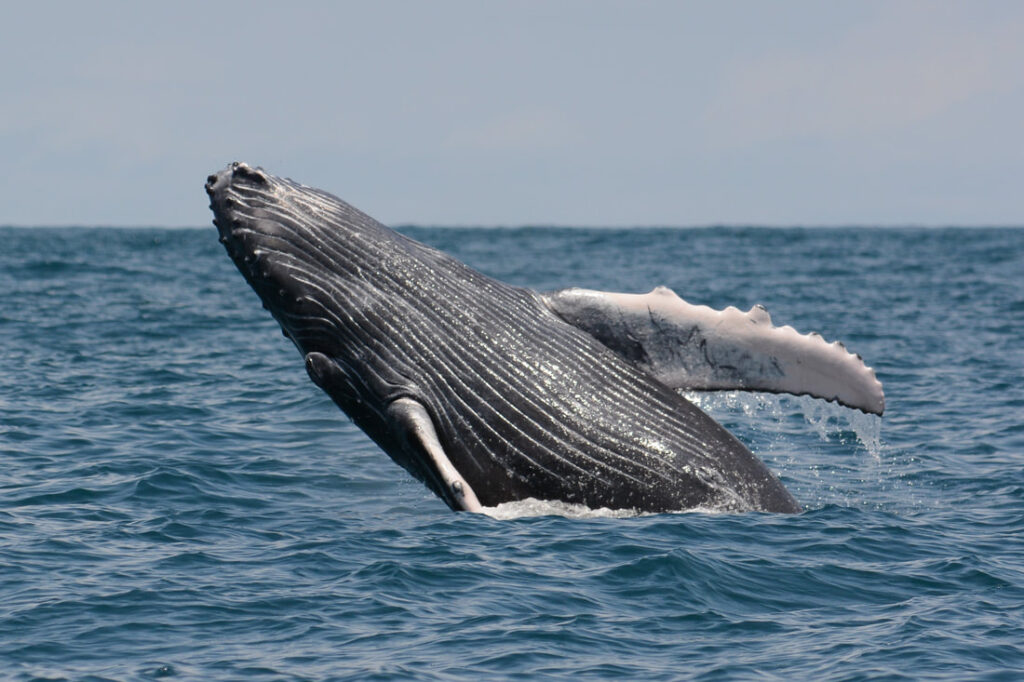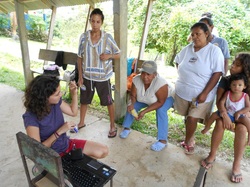Yesterday was an exciting day for the Panacetacea research group at the Islas Secas. Although for fluke id’s it was one of the slower days with only four, the day started off with the placement of the long term hydrophone. The hydrophone this year is going to stay down for approximately 7 months, with the hope of capturing the full song of both the southern and northern populations of humpbacks. As the day went on we had some very exciting sightings, around mid-day there was a young calf that decided he wanted to practice fully breaching. He gave us a wonderful show for about a half hour. As day was getting late our captain incredibly saw a breach from about 3 miles out, drove us out to where he thought it was, we sat for about thirty seconds and the whales breached again not even 50 feet away. Not only had he seen them from impossibly far away he brought us spot on. There was a mother, calf and an escort. We were able to id the escort because he was actually doing slightly deeper dives to sing! He was following the the mother and calf and singing for them the whole way.



